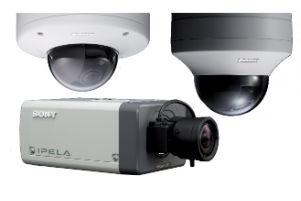 When designing a video-based Surveillance or Supervision system, mistakes are made that translate into dissatisfaction on the part of the end user. On this occasion I want to show the steps to follow to calculate the appropriate resolution of the camera (Analog or IP) that we use.
When designing a video-based Surveillance or Supervision system, mistakes are made that translate into dissatisfaction on the part of the end user. On this occasion I want to show the steps to follow to calculate the appropriate resolution of the camera (Analog or IP) that we use.
by Germán Alexis Cortés*
When people attend the courses I teach with WINGS (www.alas-la.org) they learn that a lot of calculations must be done. For example, they know that the focal length of the lens must be calculated, but out of laziness, carelessness, negligence, habit or simple ignorance, they never do them.
They also know that the resolution of the camera depends on the level of detail with which you want to see a certain image, but they also do not make the calculation that should be based on the pixel density and then, foolishly end up installing a video surveillance system with the camera and the most economical lens that their distributor offers you, to realize in the end that it was not the scene I wanted, let alone the resolution I needed. The end-user's sense of frustration is the only thing left to remember and future technology acquisitions are seriously affected.
Where is the fault? It was born long before installing the equipment. Mistakes are almost always made at the design stage.
After doing a risk analysis and creating the design criteria, you must find out exactly, what you are looking for with the CCTV system. It is the fundamental basis of the process.
Let's rely on three (3) Examples to give some more clarity.
Example 1. Cameras to identify potential thieves in a bank,
Example 2. Camera to know if the bank is full of customers.
Example 3. Camera to record the financial operations in cash of a box.
They are very different scenes that are affected by many external factors but definitely use lenses and cameras with different resolutions.
Let's review, in the first case I need a clear picture of the actions that customers are doing in each area of the bank. In the second case I need a general image of the entire customer service area and in the third case I need an image that allows me to see in great detail the banknotes that are delivered or received to an ATM.
What is the fundamental difference? It is simply how close or how far away I want to see the activity that interests me in each case. This is solved in the first instance, by making a proper calculation of the focal length of the lens to be used.
Reality
But remember that when an accident or an exceptional event happens we all want to see the detail of the scene as large as possible, therefore in real life the ability to enlarge or extend the image throughout the monitor is used, which we usually call the "digital zoom". It is at this point where the resolution of the camera is essential to continue gaining useful information for forensic and investigative work.
At this point, it fails very often, either because the camera used does not have enough resolution or because it was not recorded at the native resolution.
Precedence
Then I recommend that you keep in mind the general process that you should follow:
to. Determine what exactly you want to see with each image.
b. Calculate the focal length of the lens that allows you to clearly see the desired scene.
c. Based on the concept of pixel density, determine the minimum resolution of the camera.
d. Maintain the resolution of the image on all devices through which the image passes.
Let's review the basic principles of each part of the process:
to. Determine what exactly you want to see with each image
Although there may be many more uses, I recommend that you find out if your application can be classified into any of the following four:
1. Detection, the bodies of people in the scene can be quite small (between 5 and 10% of the total image is recommended).
2. Measure Occupancy, objects or bodies with a size of at least 20% of the scene are required.
3. Recognition, it is necessary that the person's body is almost 60% of the image, therefore his face may be at 10 or 15% of the image, enough to recognize someone who already knows himself.
4.Identification, the detail of the object of interest must be at least 40% of the total image, therefore if the idea is to identify a person we do not know, his face must occupy 40% of the scene or if we want to count bills, hands and the immediate counting area, it must occupy 40% of the scene.
b. Calculate the focal length of the lens.
In previous editions we have described the procedure for calculating the lens, so I assume you already know how to do it. Remember that we depend on three factors to take into account:
1. Size of the object I want to see. I measure exactly the area (vertical x horizontal) that I want to see, according to the use that I am going to give to the CCTV system (response to the previous step).
2. Distance from the camera to the object I want to see. It should be measured from the tip of the lens, to the center of the imaginary plane that I want to see in the video image.
3. Format of the camera I am going to use. I look in the selected camera, what format it has. (The camera is chosen according to the external characteristics of the scene such as light level, dynamic range, power supply, color adjustments, among many other factors.)
Example 3.
If we want to see the detail of the banknotes in a bank transaction, the size of the object is the area where the customer usually counts the money in front of the cashier that delivers it. Something that does not exceed 80 centimeters wide (A) by 60 centimeters high. Notice that having a scene of that small size, the bills (20 cmts) are easily seen and we could count them.
To finish the calculation we must assume some data: Suppose that the camera is behind the cashier at a distance of 4 horizontal meters and a height of 3 meters. Remembering Pythagoras, we discover that the distance from the camera to the object I wish to see, can be 5 meters (D). Let's assume that the camera we work with has a format of 1/3", therefore its size is (4.8 mm (a') x 3.6 mm). This is achieved in the size tables of photosensitive elements of the cameras.
Then let's remember the formula: f=Dxa'/A = 5x4.8/0.8 = 30mm. Therefore we require a lens of approximately 30 mm for this case.
Example 2.
However if what we want to know if the bank is very full of customers, then we need a scene where you can see the entire area of queues and waiting, which can vary according to the architectural layout of each branch. To follow suit, assume that we need an area 6 meters wide. In this scene we are not interested in the details of each client, but in being able to count the people waiting.
Suppose the camera is at a distance of 5 meters from the imaginary plane and we use a 1/3" camera.
Then returning to the formula: f=Dxa'/A = 5x4,8/6 = 30mm. Therefore we require a 4mm lens for this case.
c. Determine the minimum resolution of the camera
To do this we must resort to the concept of pixel density. This is the minimum number of pixels per unit length, which I require in an image to be able to distinguish details. Again it depends on the use you are going to give to that image. It is a concept that we have also touched on in other previous editions.
I must clarify that pixel density tables are based on the experience and subjectivity of different manufacturers ... therefore there is no standardization about it, but it is also good to clarify that the tests that have been done and the results are similar.
For example, some manufacturers have suggested that in order to clearly read a vehicle's license plate, I need 300 pixels per meter. Others that in order to identify a human face require 350 pixels per meter. Or that to be able to count bodies I require 70 pixels per meter, while to be able to count details I require 250 pixels per meter.
These data vary in the tables supplied by each manufacturer, but in the end the results are very similar.
Example 1
To determine possible criminal actions of a human in a bank I require 250 pixels per meter. I need a camera that sees the entire general scene of the bank, where you can possibly see the waiting area, the ATM area and the general information or special attention windows.
Suppose the scene is 10 meters wide, the camera is at a distance of 7 meters, and we use a 1/3" camera.
The lens I must place is: f=Dxa'/A = 7x4.8/10 = 3.4mm. Therefore we require a 4mm lens for this case.
When we get that image on a monitor, we see that we can a wide area of the bank, however we know that in order to see criminal actions I need 250 pixels per meter, therefore making a simple rule of three, I discover that that image must have: horizontal pixels = 10 meters x 250 pixels = 2500 pixels, horizontally.
If I assume that the camera has a 4:3 format, like the NTSC standard, then by making another rule of three, I can know how much that same image should have vertically. Vertical Pixels = Horizontal Pixels x 3 / 4 = 2500 x 3 / 4 = 1875 Pixels, vertically.
Then the resolution of the camera should be 2500 horizontal pixels x 1875 vertical pixels = 4.7 Mega pixels.
Notice, that in order to see (by doing a digital zoom) a criminal act in that scene, I require not only a lens calculation, but a resolution calculation. This is what really allows me to see the desired information clearly.
Example 2
For the use of Measure Occupancy or know if the bank has many customers, I require 70 pixels per meter, therefore retaking the image obtained with the 4mm lens we have a scene of 6 meters, which must have 420 horizontal pixels and therefore must have 420 pixels x 3 / 4 = 315 vertical pixels, for a minimum total resolution of 0.13 Mega Pixels.
If we realize a low resolution camera (0.4 Mpx) is enough for this application.
Example 3
To see very precise details, such as counting money, I require 350 pixels per meter, therefore taking up the image obtained with the 30mm lens we have a scene of 0.8 meters, which should have 280 horizontal pixels and therefore should have 280 pixels x 3 / 4 = 210 vertical pixels, for a minimum total resolution of 0.06 Mega Pixels.
Again with a low-resolution camera is enough.
Special analysis
But then we could think of another solution, what if we do not use such a long lens (30 mm) but a much wider one, and increase the resolution of the camera? In this way we could see several boxes simultaneously with the same camera (reducing costs).
In this case the camera can be located at the same point, but now the horizontal area of the scene can be about 6 meters to cover 4 boxes. Then let's recalculate the lens, it requires: f=Dxa'/A = 5x4.8/6 = 4mm.
And we recalculate the minimum resolution of the camera, based on 350 pixels per meter, therefore the scene should have 6 x 350 = 2100 horizontal pixels; it must have 2100 pixels x 3 /4 = 1575 vertical pixels, for a minimum total resolution of 3.3 Mega Pixels.
So in this case the camera will effectively need a much higher resolution.
In both cases we get what we want, only in the first case we need 4 economic cameras and in the second we need a single but more expensive one. However in the first case we require a standard recording device but with more channels and in the second case with fewer channels but of excellent quality.
The decision is linked to the associated costs, but also to the simultaneity of the images that are required.
d. Maintain the resolution of the image on all devices through which the image passes.
That is, be consistent when specifying from the camera to the monitor through all the devices that manage the image and those that transport it from the remote site to the control room. Remember that your system is just as bad as the baddest of the devices you use. It is useless to have cameras of excellent resolution, if the transmission, recording or display system does not manage to maintain that good quality.
Conclusions
Once I have determined how I use my video-based monitoring or surveillance system, all I need is to see the scene of interest in the necessary detail. I can achieve this in two ways: a) Calculating a lens that focuses on detail or b) Increasing the resolution of the camera allowing the use of a wider lens.
I hope that from now on, dear reader, you will not forget to do both calculations in all the projects you have and that you recognize the close and direct relationship that exists between the calculation of the lens and the calculation of the resolution of the camera.
* Germán Alexis Cortés H. is a Colombian Electronic Engineer, with a postgraduate degree in Engineering Management Systems. Consultant of the National Institute of Standards and Technology – NIST, in Electronic Security and Building Automation. CCP of ASIS, and CISSP of ISC2. He has over 20 years of experience in the electronic security industry. Renowned lecturer and university professor on high-tech issues at the Latino level. He has been a director of several companies in the sector and is currently a partner and directs Insetrón Ltda, an engineering and technical consulting company in electronic network projects for security, communications and automation. He has successfully participated in more than 150 projects at the Latino level.




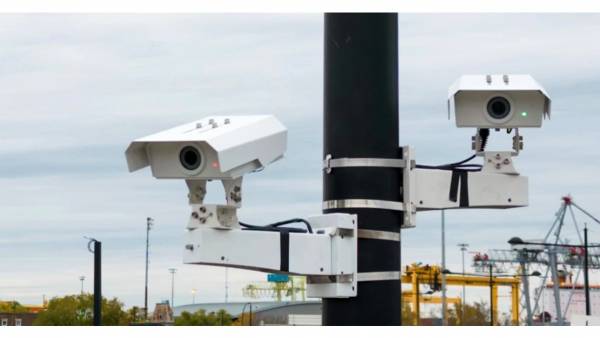
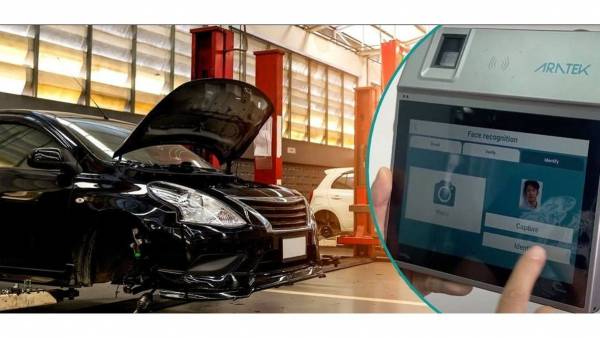
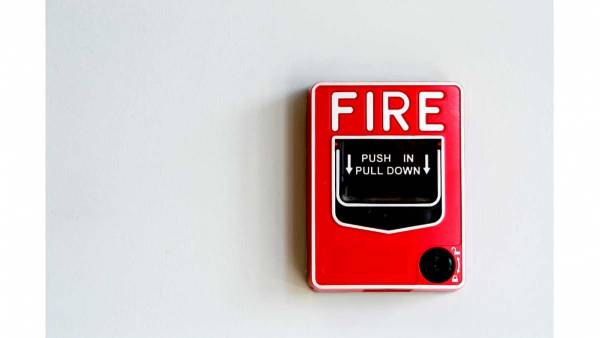

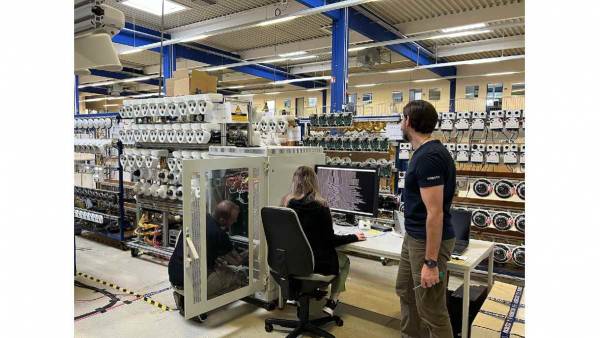















Hola, el Ing. Germán Cortés, nos envía la siguiente respuesta a tu consulta:
Casi nunca se usa esta prueba, pero claro que puede hacerse. Es un tema de cálculo sencillo usando las fórmulas conocidas para el cálculo del lente partiendo de la distancia al objeto y el tamaño real de la imagen captada. Simplemente se despeja otra variable.
Entonces sugiero hacer una prueba con el lente que deseas medir. Medir la distancia desde la cámara usada al objeto que se quiere ver, medir en la vida real la escena que se está viendo en el monitor. Y finalmente conocer el formato de la cámara expresado en pulgadas. Con estos datos podemos calcular, con la formula: Distancia focal = tamaño horizontal del sensor x Distancia al Objeto / Distancia Horizontal de la escena. La respuesta dá en mm y esa es la distancia focal del lente.
Saludos.